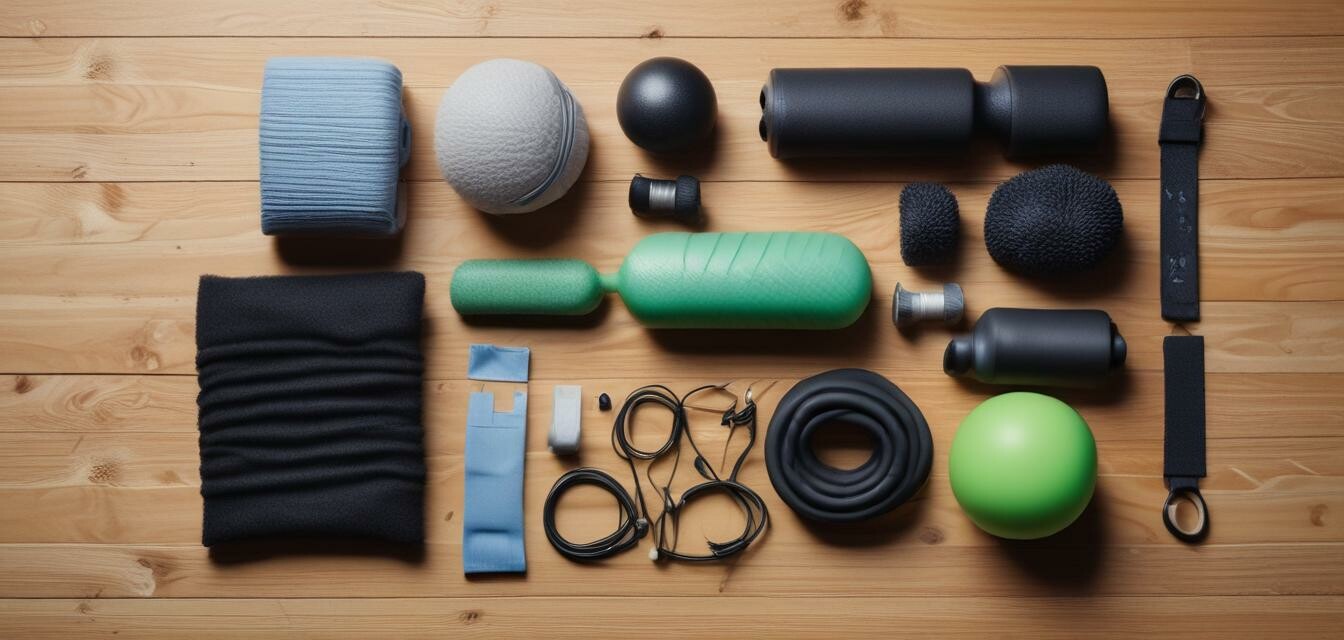
Recovery tools to enhance your fitness journey
Key Takeaways
- Recovery tools play a vital role in an effective fitness regimen.
- Tools range from foam rollers to massage devices, each serving unique benefits.
- Consistent use of recovery tools can lead to improved performance and reduced injury risk.
- Incorporate these tools along with proper nutritional habits for the best results.
- Visit our section on tips and advice for more fitness guidance.
Understanding the importance of recovery in your fitness journey is essential for optimized performance and injury prevention. Recovery tools can provide relief and enhance the effectiveness of your workouts. Here, we explore various recovery tools that can help you on your path to fitness.
What are recovery tools?
Recovery tools are designed to aid in muscle recovery and alleviate soreness or discomfort following physical activity. They come in various forms, each with unique features that cater to different recovery needs.
Types of recovery tools
Let's take a closer look at some common types of recovery tools and how they can benefit your fitness routine:
| Type | Description | Benefits |
|---|---|---|
| Foam rollers | Cylindrical tools used for self-myofascial release | Improves flexibility, reduces muscle tightness |
| Massage balls | Small, firm balls used to target specific muscle groups | Great for pinpointing tense areas, enhancing circulation |
| Compression sleeves | Garments that apply pressure to muscles | Reduces muscle soreness, enhances blood flow |
| Massage guns | Battery-operated devices delivering rapid bursts of pressure | Effective in relieving soreness, improving recovery time |
| Resistance bands | Elastic bands useful for stretches and strength training | Helps maintain muscle tone while recovering |
Benefits of recovery tools
Utilizing recovery tools as part of your fitness routine can offer several benefits:
- Enhanced flexibility: Many recovery tools like foam rollers help in improving your range of motion.
- Reduced soreness: Regular use can keep soreness at bay, allowing for smoother workouts.
- Injury prevention: By addressing tightness and imbalances, recovery tools help mitigate the risk of injuries.
- Better overall performance: The ability to recover efficiently means you can train harder and achieve better results.
- Stress relief: Some tools also provide a soothing effect that can help alleviate stress.
Incorporating recovery tools in your routine
Here are some tips on how to include recovery tools effectively in your fitness regimen:
Tips for using recovery tools
- Consistency is key: Make recovery a regular part of your routine, not just an afterthought.
- Know your body: Pay attention to areas of tightness or discomfort and target them specifically.
- Combine tools: Different tools can be used together for comprehensive recovery.
- Listen to your body: Allow adequate time for recovery and avoid overusing tools.
- Stay hydrated: Good hydration aids in muscle recovery and overall wellness.
Choosing the right recovery tools
With an array of recovery tools available, selecting the right ones can be overwhelming. Here are some key points to consider when making your choice:
| Tool | Key Feature | Best For |
|---|---|---|
| Foam Roller | Self-myofascial release | Muscle tightness and flexibility |
| Massage Ball | Targeted muscle release | Sore spots and knots |
| Compression Sleeves | Pressure application | Preventing soreness |
| Massage Gun | Percussive therapy | Deep muscle recovery |
| Resistance Bands | Elasticity and flexibility | Light strength training |
Conclusion
Integrating recovery tools into your fitness plan is an effective strategy for enhancing your performance and minimizing the risk of injury. Remember, recovery is just as important as the workouts themselves. For more insights on maintaining a successful fitness journey, check out our buying guides and explore the best home gym essentials available in our home gym collection.
Pros
- Improves muscle recovery time.
- Reduces risk of future injuries.
- Increases overall workout effectiveness.
- Easy to integrate into any routine.
Cons
- May require a financial investment for quality tools.
- Requires space for usage.
- Not all tools are suitable for every individual.